I have a List of objects that contain another List. I want to bind both Lists to different controls (one nested within the other - a ListView as GridViewItem). But I can't get the xaml to work.
Very close to this question comes Binding List of Lists in XAML?.
And there is an article regarding this in the MSDN documentation:
How to bind to hierarchical data and create a master/details view - could be the solution, but I find it difficult to apply it to my code.
Other articles touch this topic, but not that good and also as a new user I'm not allowed to include more than two hyperlinks in a question.
My code looks similar to this (changed to city / restaurant scenario for clarity):
Model:
public class City
{
string Name { get; set; }
List<Restaurant> RestaurantList { get; set; }
//.. also a constructor with parameters for the properties and an overriding toString method that returns Name
}
public class Restaurant
{
string Name { get; set; }
List<Uri> UriList { get; set; }
//.. also a constructor with parameters for the properties and an overriding toString method that returns Name
}
Code-behind (LoadState method):
//.. getting a List of cities (with restaurants), that is being created in some model class
this.DefaultViewModel["Items"] = Cities;
Some people set the DataContext instead. I got this from the MSDN tutorials and it worked so far. But I'm not sure which is "better".
Okay now the XAML:
I want to have a GridView with the Cities as GridViewItems. Within one GridViewItem there's a Grid, displaying the City's Name in the top row and a ListView below. The ListView contains the Restaurants (only of that City!). The ListViewItems are only TextBlocks showing the Restaurant's Name.
I want only the Restaurants to be clickable.
Like this:

<!-- the following line is at the very top and the reason why it should work without setting DataContext explicitly -->
DataContext="{Binding DefaultViewModel, RelativeSource={RelativeSource Self}}"
<!-- ... -->
<GridView Grid.Row="1" ItemsSource="{Binding Items}" SelectionMode="None">
<GridView.ItemTemplate>
<DataTemplate>
<Grid Height="500" Width="200" Margin="50" Background="Gray">
<Grid.RowDefinitions>
<RowDefinition/>
<RowDefinition Height="5*"/>
</Grid.RowDefinitions>
<TextBlock TextWrapping="Wrap" Text="{Binding Name}"/>
<ListView
Grid.Row="1"
ItemsSource="{Binding RestaurantList}" IsItemClickEnabled="True">
<ListView.ItemTemplate>
<DataTemplate>
<TextBlock Text="{Binding Name}" Tapped="Restaurant_Click"/>
</DataTemplate>
</ListView.ItemTemplate>
</ListView>
</Grid>
</DataTemplate>
</GridView.ItemTemplate>
</GridView>
This way only gray boxes are shown. When changing the TextBlock's binding to Text="{Binding}" then at least the Names of the Cities are shown. Which I don't understand and also don't want, because I guess the overriding of the toString methods is not meant to be used this way. The Names of the Restaurants don't show up in both cases.
Also, the scrolling somehow broke in this view, but that's a different story I suppose.
So: What's wrong with the data binding in the XAML?